Commercial Real Estate Web Design:
Ideas, Examples & Best Practices
Real estate websites are in a territory of their own. It’s not enough to slap together a pre-built site in commercial real estate, especially if you’re going after larger opportunities. It’s a highly competitive vertical, no matter what city you’re in, and cutting corners will not allow you to maximize results. So if you’re looking to build a good website for free in this niche, it’s best to know those options are unlikely to do you any favors.
If you’re serious about competing in the commercial real estate market, we would recommend focusing on the following factors:
Brand Message Integration
In the case of Metropolitan Realty Group, a major player in the New York City affordable housing market, we wanted to evoke feelings of comfort, safety, and a sense of human connection. For this project, we resculpted the brand identity and coinciding web experience to more closely align with these objectives.
While their extraordinary work in development is noted on the initial homepage experience, the real focus is on the tenants and how MRG wants them to feel about their quality of life within the community their properties and tenants are a part of. Capturing this essence and expressing MRG’s highly-lauded credentials in the space above the fold is how they differentiate themselves from others in the industry, so was therefore a critical part of their web experience.
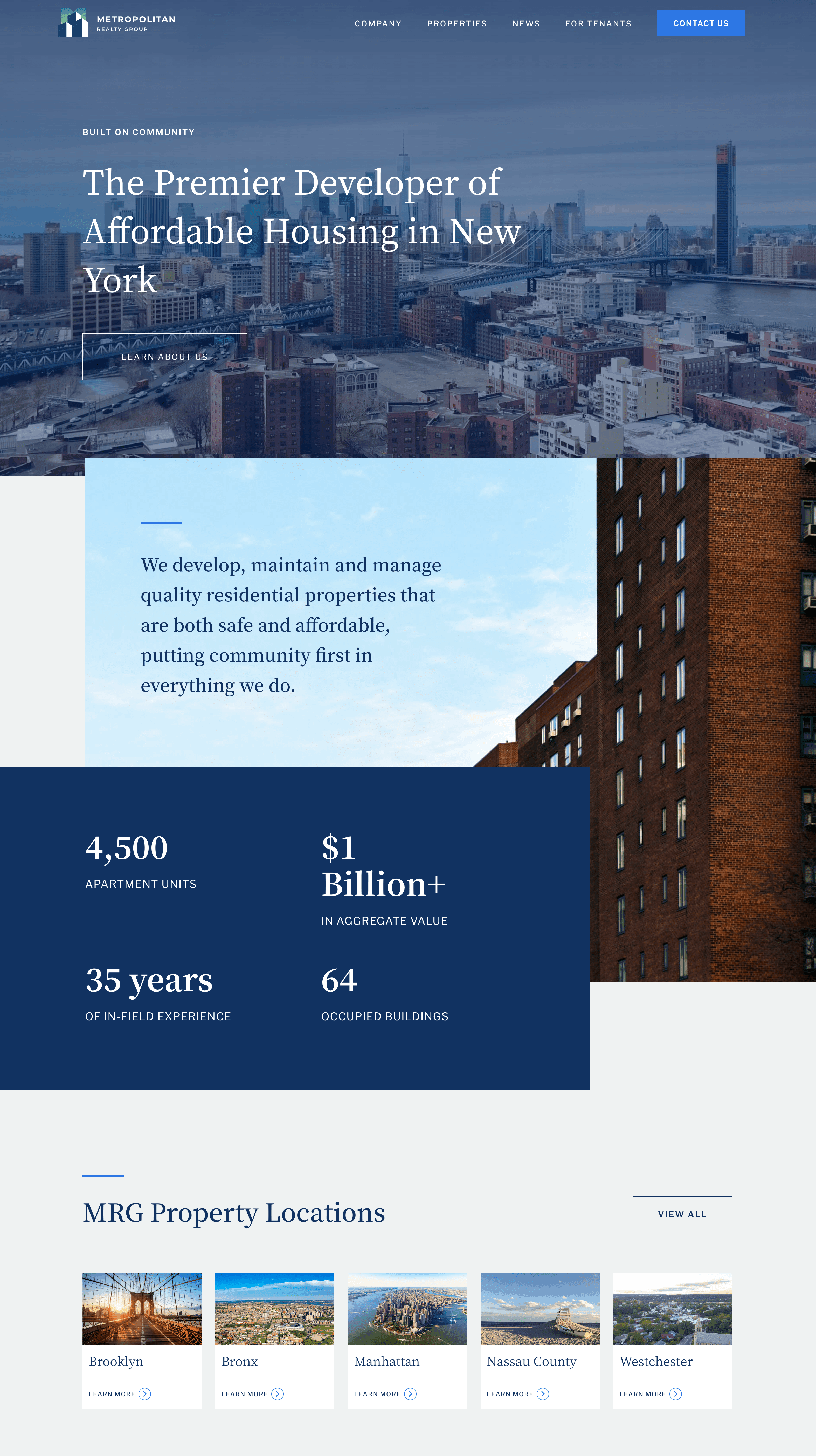
Highly Developed Real Estate Aesthetic
Traditionally, real estate websites present a crisp look, with small to medium blocks of text. They let their properties do most of the talking, and their testimonials do most of the selling. The overall goal is to be gentle and welcoming, yet impressive.
Here is an example of a minimal site layout we designed for a residential and estate brokerage that was targeting high-end clientele selling luxury homes. To best appeal to their demographic, we created a sophisticated aesthetic and were particularly selective to utilize imagery that would resonate with their target audience. Notice how the neutral color selection creates a modern, sophisticated look and allows for the property images to showcase quality at a glance:
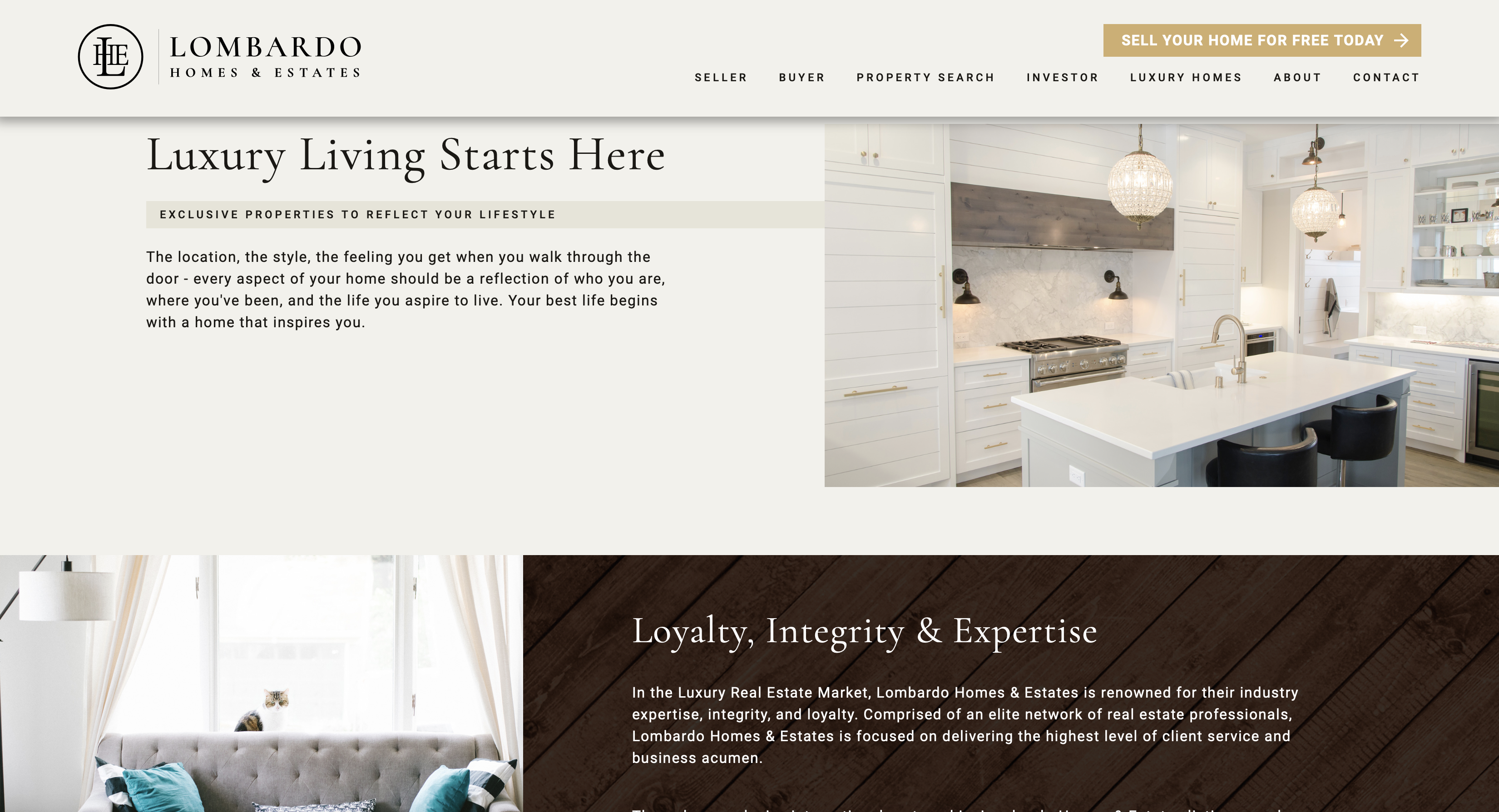
Photo Assets
We often find that a photo shoot is one of the vital design services necessary to best carry the message of corporate real estate accounts. For example, when working with Oxford & Simpson, establishing a standard of elegance for their properties was essential to their value proposition. Incorporating a full-image slider with new, larger-than-life images showcasing the architecture and craftsmanship immaculate nature of their commercial properties allowed us to gain instant credibility in the minds of their target audience.

Project Teaser Pages
When presenting a new brand, many developers prefer to have a “project teaser” page available for meetings and other important conversations leading up to the official project launch. The teaser page builds anticipation and a visual picture in the user’s mind of the future development, which can be incredibly helpful in solidifying partnerships before going public.
For The Crossings at Brick Church Station, a branded “Coming Soon” splash page appears:
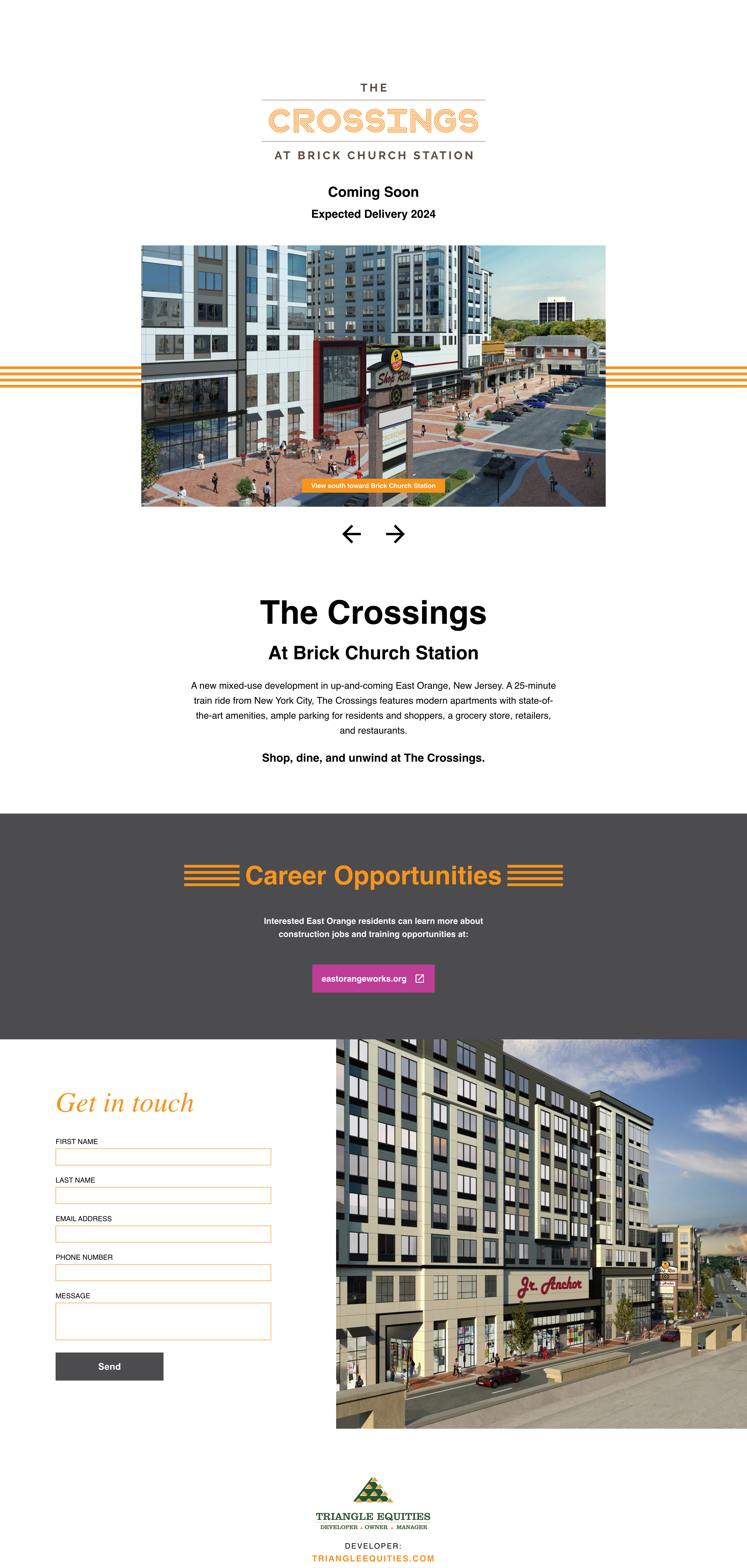
This section functions as a slider displaying various simulated views around the property, allowing potential tenants and investors to envision the living environment presented.
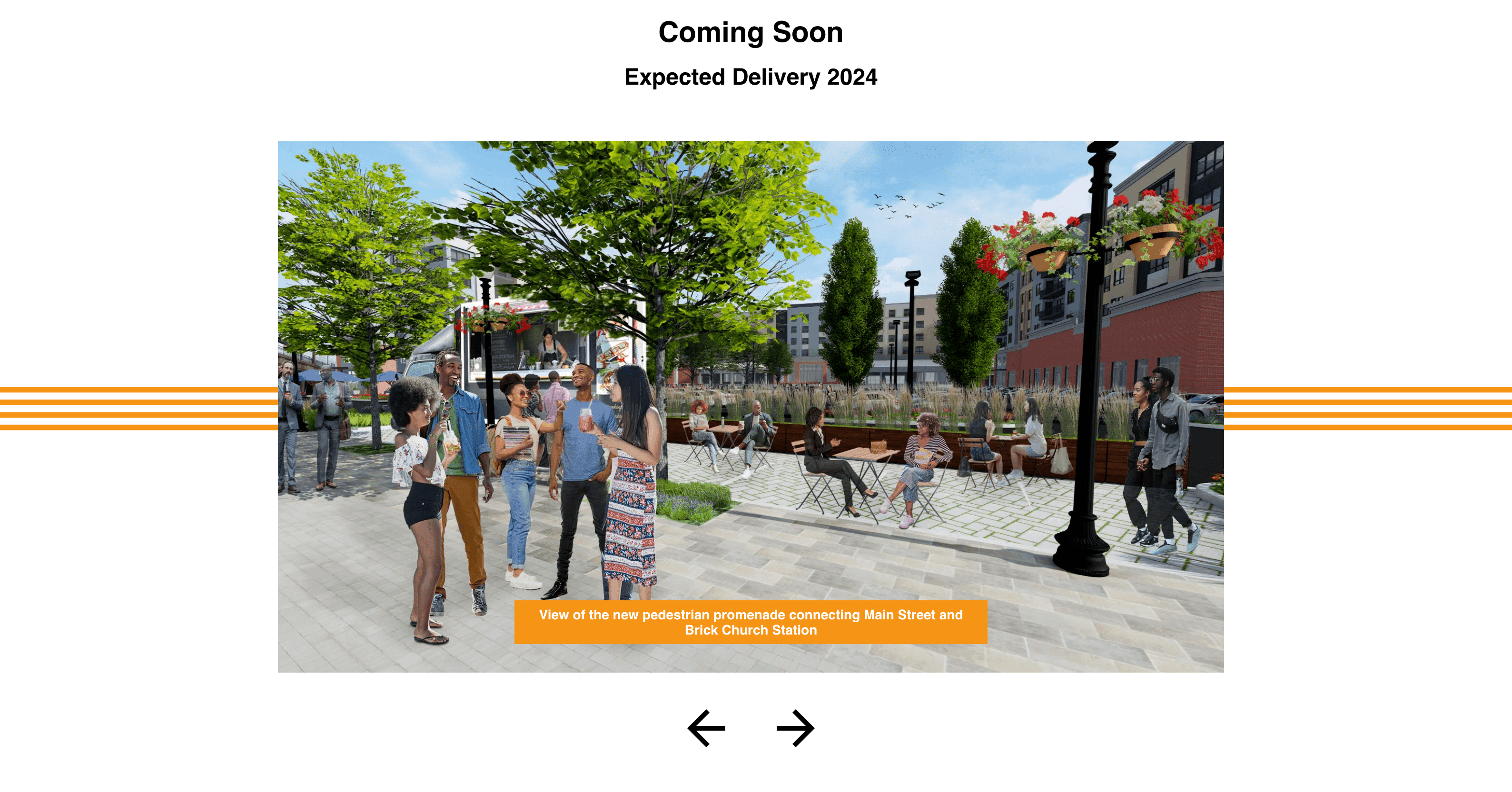
Personalized Real Estate Website Content
Once the proper aesthetic is established for a real estate brand, the next step is to create the best content possible that reflects the personality of the organization. In MRG’s case, they believe the true mission of affordable housing is to enrich the lives of their tenants. For them, this goes beyond simply ensuring quality homes. An additional important component of their website content focuses on philanthropic services including collaborations with scholarship programs, summer camps, local law enforcement agencies, and college preparation courses.
To add to the personal connection tenants have with their organization, we’ve crafted a monthly tenant newsletter which highlights in-complex happenings and acts as a frictionless portal to introduce the community to these programs.
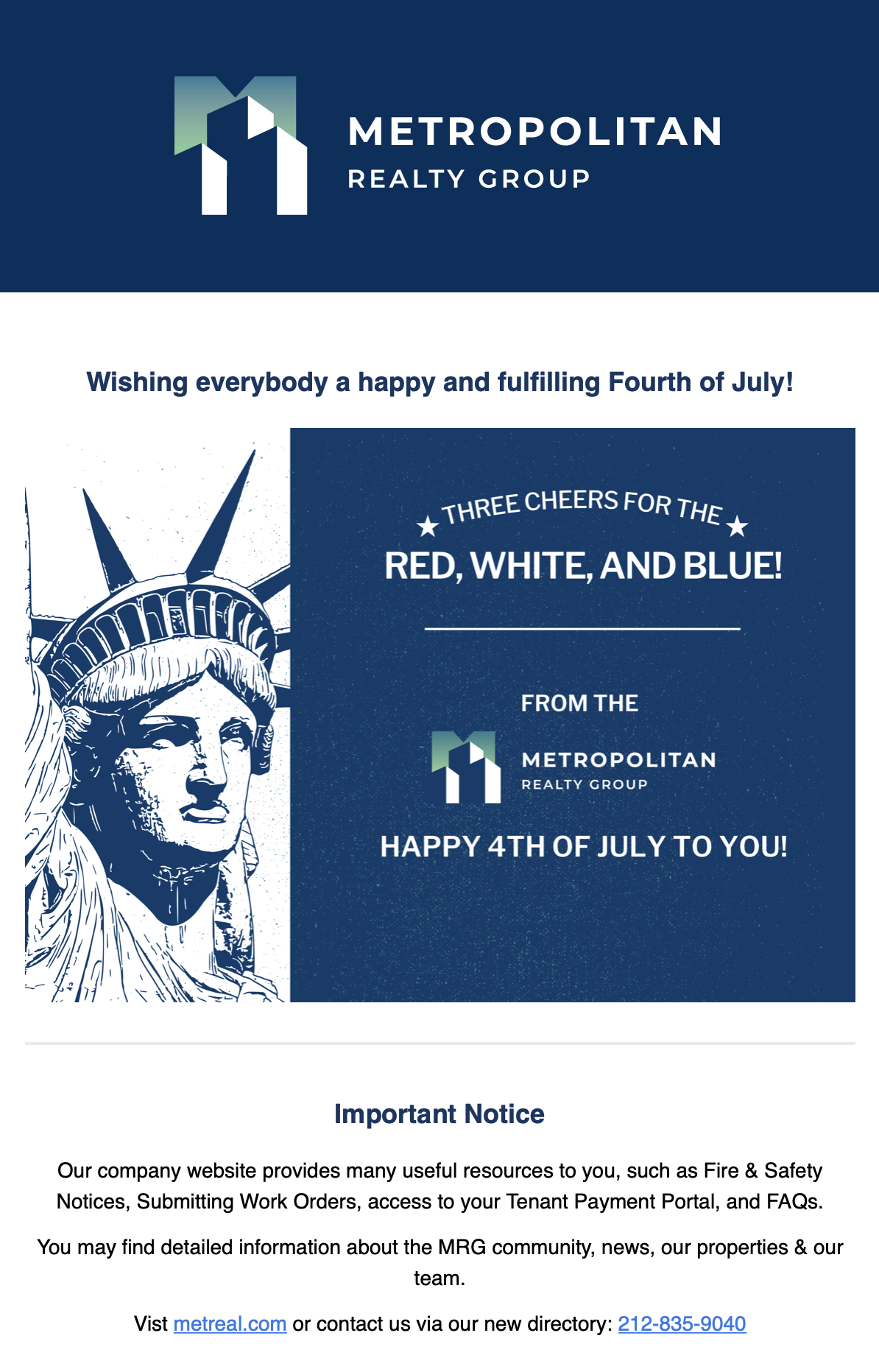
Beyond that, our monthly “From the CEO’s Desk” column allows them direct access to developments, perspectives, and personal anecdotes from the founder to foster a greater sense of community.
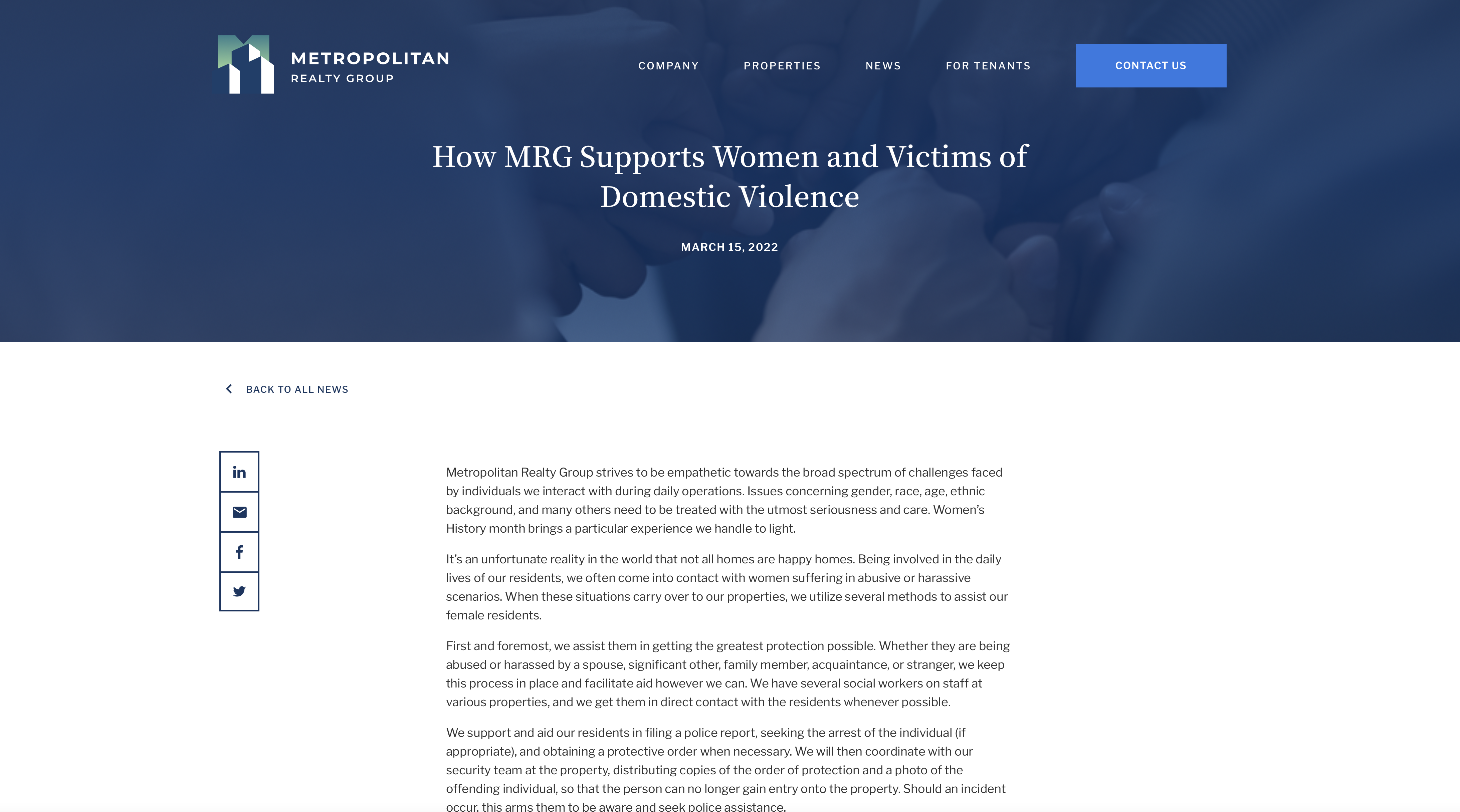
It’s important to recognize there is no “one size fits all” strategy for real estate content. Simply mimicking what works best for your competition will not do. Each brand needs to have its own personality to stand out in such an intensely competitive space.
Whereas Metropolitan Realty Group focuses on improving life within New York City, O’Shea Properties provides their commercial real estate services to a target market of Long Island businesses. One of the ways we adapted to approach their needs was to create a “Tenant Spotlight” series, where O’Shea can proudly showcase the work of their tenants, and further instill their brand’s message of enabling the progression of local entrepreneurs.

O’Shea’s site also highlights Featured Properties, creating anticipation for new developments and offering an image slider for prospective tenants before clicking on the “learn more” call to action.

There are countless ways to employ these concepts for different commercial real estate websites, but these examples should help spark ideas. You’ll have to decide which ideas are best for your organization.
When in doubt, consider the end user. What stories does your brand tell that truly drive property signings? Are there anecdotes, examples, or brochures that often “make the deal” for your in-house team? These are great places to start for examples of what real estate content will best resonate with your audience.
Commercial Real Estate Demands Custom Web Design Experiences
When it comes to site functionality, custom experiences are what create ease of use and set your ability to deliver apart from the rest. Your web development team will need to create the best on-site experience possible. Some ideas include customized search filters, lavish photo gallery configurations, and comprehensive navigation menus which speak to each different audience segment you hope to engage.
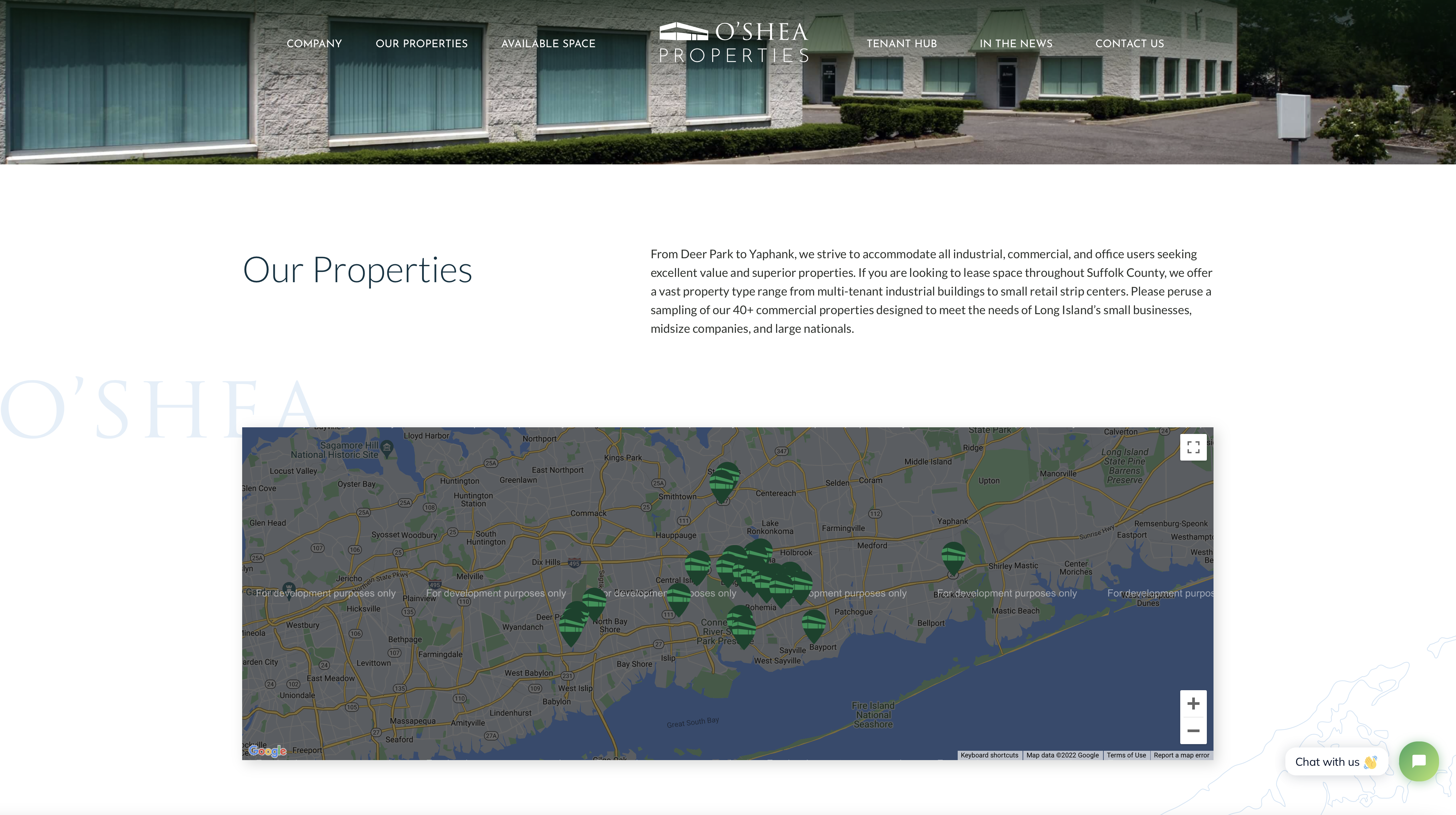
Custom map views and search options are highly valuable in this space, as they allow users to quickly customize their experience to best suit their preferences. Sliders that narrow results down further with aspects such as cost, proximity to zip codes, and type of dwelling can improve engagement and create more direct pathways to the properties your audience is seeking.
When designing the Terminal Logistics website, we created an interactive map to showcase surrounding access points that give value to their warehouses, such as airports and highways.
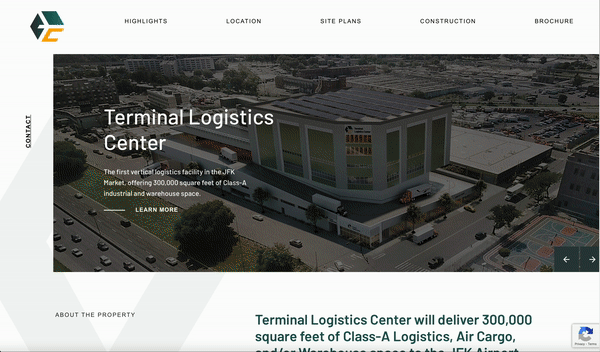
In the case of Kensington Estates, the homepage is designed to attract potential residents for the developer and create a sense of urgency. The top banner creates scarcity by displaying the current amount of units sold, while the pop-up displays a snapshot of property details with an option to check availability.
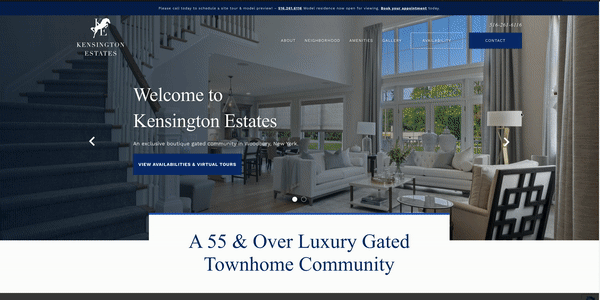
Value Through Service
Ultimately, the goal of any real estate website is to communicate quality, maintain a strong brand presence, and build trust with your prospects. In recent years, the timeline of digitizing key meetings and client engagements has been expedited. As a result, optimizing your organization’s web presence and on-site experience is a more potent influence in business than ever before.
If you’re ready to discuss how your organization’s unique value proposition can be translated into a sleek digital experience, schedule a call with us.